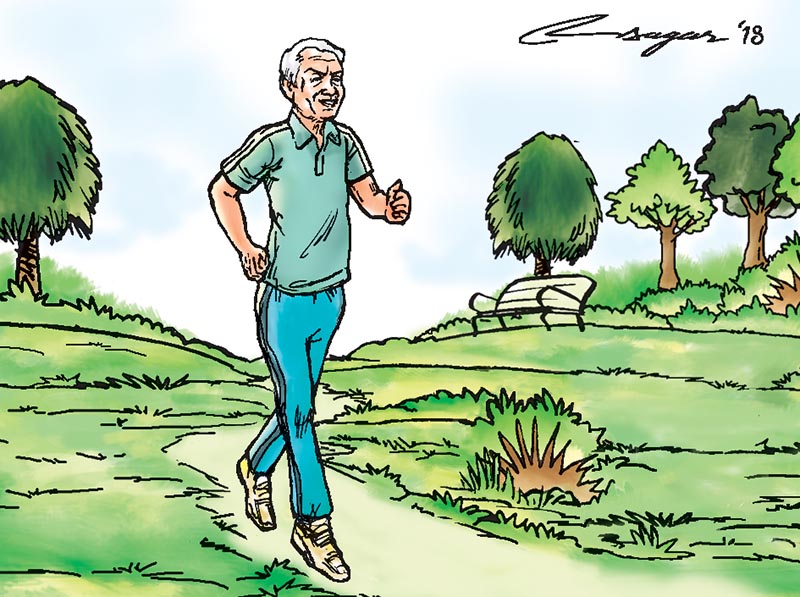Exercise comes of age: Some recommendations for elderly
Almost all older adults are known to experience reduced physical function at some point of time, which is most likely due to a geriatric condition called ‘sarcopenia’ — a condition with loss of skeletal muscle mass
Growth in the number of older persons is a global phenomenon. According to the United Nations, by 2050 virtually every country in the world will experience a substantial increase in the size of the population aged 60 years or over. Nepal is not an exception. According to the World Health Organisation (WHO), life expectancy of Nepali people, as per Nepal statistics report 2015, at birth is estimated to be 68 years for male and 71 years for female. Around 8 per cent of the population in Nepal is more than 60 years of age. The number of people aged 60 years or more is likely to double by 2050. Increase in life expectancy will mean there will be wide-ranging age-related conditions, which create many social and healthcare challenges. But many of geriatric conditions are preventable and we need to be prepared.
Almost all older adults are known to experience reduced physical function at some point of time, which is most likely due to a geriatric condition called “sarcopenia” — a condition with loss of skeletal muscle mass. After the fifth decade of our lives, we tend to lose 1-2 per cent muscle mass per year. With the increase in our age, we also lose muscle functions. Sarcopenia is a global concern as older adults with sarcopenia are at an increased risk of reduced mobility and limitation of other physical functions leading to disability and dependency, ultimately contributing to a poor quality of life in old age. Besides, lack of general awareness makes us perceive that living longer means a burden rather than pride and opportunity. This emanates from the fact that ageing reduces physical functionality preventing the old adults from moving around and performing daily activities independently.
Evidence from past scientific studies suggests that loss in muscular function is preventable provided that interventions are timely implemented. Among such interventions, proper physical exercise has been a major intervention strategy to avoid or delay the loss of muscular functions. A portion of Nepali senior citizens is known to be actively involved in many forms of exercises such as yoga and walking, but mostly with a motive to lose weight. It must be kept in mind that unplanned/ random performance of physical exercises may lead to loss of muscle mass, which the general older population may associate with successful weight loss. Hence, senior citizens should have proper understanding of physical activity and perform physical exercises accordingly.
Being physically active means to perform physical exercises or be involved in physical work more than twice a week, lasting minimum of 20–30 minutes every session, leading to sweating and increased breath. However, senior citizens should be aware of their pre-existing cardiovascular, respiratory, orthopaedic conditions and should take precautions.
A question that is frequently asked by senior citizens is which type physical activities are most beneficial for them. The most advisable exercises for senior citizens could be “endurance exercises” and “resistance exercises”. Endurance exercises are moderate intensity aerobic physical activities for at least 30 to 60 minutes with 10 minutes in each session (150-300 minutes per week), or vigorous intensity exercise for 20 to 30 minutes per day (75-150 minutes per week). Walking and jogging are the most common example of aerobic exercise. Aquatic exercise (for example swimming) and cycling (stationary cycling exercise for those with limited tolerance) are other examples of aerobic endurance exercises. Similarly, resistance exercises can be performed for two days per week, depending upon one’s muscular capacity. Exercises involving major muscles of both arms and legs, such as progressive weight training exercise (ie slowly increasing the weight) of 8-12 repetition each and stair climbing are some examples of resistance exercises, which could increase muscular strength. Resistance exercises are very effective in increasing functional capacity.
Regular physical activities have multiple benefits. Performing regular physical activity is known to prevent or at least delay many age-related conditions including Alzheimer’s disease, frailty (a much complex geriatric syndrome leading to added vulnerability to number of negative effects), some types of cancer. They could also lower rates of non-communicable diseases such as hypertension, stroke, diabetes and other cardiovascular conditions.
Moreover, being involved in regular physical activity does not require huge economic investment. In addition, physical activities provide the opportunity of more social interactions, which overall may aid in avoiding the burden of detrimental consequences of ageing.
Although much of these recommendations come from studies conducted in developed countries with respect to the age-related conditions of people there, Nepali senior citizens are encouraged to perform adequate/ proper physical activities depending upon their physical conditions. Inactive senior citizens and those with some medical conditions should start slowly before making proper/ suitable physical exercises a habit. A concerted commitment from senior citizens themselves, family members, healthcare workers and policy makers is required to help the old adults live a healthy, graceful and quality life.
Dr Chhetri is a geriatrician at University Hospital of Toulouse, France






